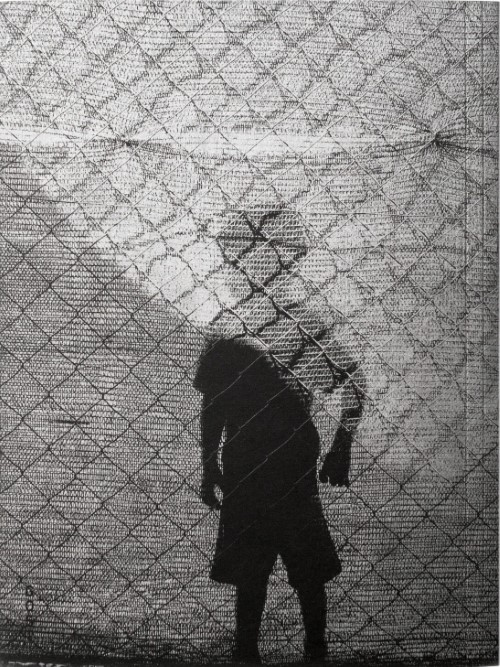« Mes photographies ne sont pas destinées à représenter un récit objectif de la guerre en Irak contre lequel comparer les textes. Plutôt, le livre est aux prises avec mon propre rôle et mon pouvoir de narrateur – en particulier celui qui a accès à des publications étrangères – et les préjugés et les limites inévitablement ancrés dans mon travail. »
Saman a commencé à travailler comme photographe de presse en Irak peu avant l’invasion en 2003. Il a couvert l’occupation et le retrait américains, les déplacements, les violations des droits de l’homme, les crises humanitaires, la gouvernance et l’EIIS. Plutôt que de présenter un récit historique linéaire de l’Irak après Saddam Hussein, Saman vise à transmettre la cacophonie des voix qui ont raconté la guerre.
Dans le livre, des photographies de Saman sont présentées avec des textes incluant des citations de personnalités politiques et militaires, des listes de civils irakiens tués et du personnel militaire de la coalition américaine, un journal édité des opérations militaires, des manuels pour les soldats, des transcriptions officielles expurgées et des références à la culture populaire qui reflètent un lexique sinistrement ironique de la guerre. Les combinaisons de texte et de photographie soulèvent des questions sur la formation narrative en guerre. Certains appariements révèlent un conflit entre la représentation visuelle du conflit de Saman et le discours officiel, tandis que d’autres fournissent des intersections ou des ponts inattendus.
Le titre du livre et les sous-titres des chapitres suivants sont tirés de la liste des milliers de noms de code utilisés par l’armée américaine pour identifier ses opérations en Irak de 2003 à 2010 ; préface de Sinan Antoon.
‘My photographs are not intended to represent an objective account of the Iraq war against which to compare the texts. Rather, the book grapples with my own role and power as a narrator – particularly one with access to foreign publications – and the biases and limitations inevitably embedded in my work.’
Saman began working as a newspaper photographer in Iraq shortly before the invasion in 2003. He has covered the US occupation and withdrawal, displacement, human rights abuses, humanitarian crises, governance and ISIS. Rather than present a linear historical account of Iraq after Saddam Hussein, Saman aims to convey the cacophony of voices that have narrated the war.
In the book, photographs by Saman are presented alongside texts including quotes from political and military figures, lists of killed Iraqi civilians and US coalition military personnel, an edited log of military operations, handbooks for soldiers, redacted official transcripts and pop culture references that reflect a sinisterly ironic lexicon of war. The pairings of text and photograph provoke questions about narrative formation in war. Some pairings reveal a clash between Saman’s visual representation of the conflict and official discourse, while others provide unexpected intersections or bridges.
The title of the book, and subsequent chapter subtitles, are picked from the list of thousands of code names used by the US military to identify their operations in Iraq from 2003-2010 ; preface by Sinan Antoon.
























